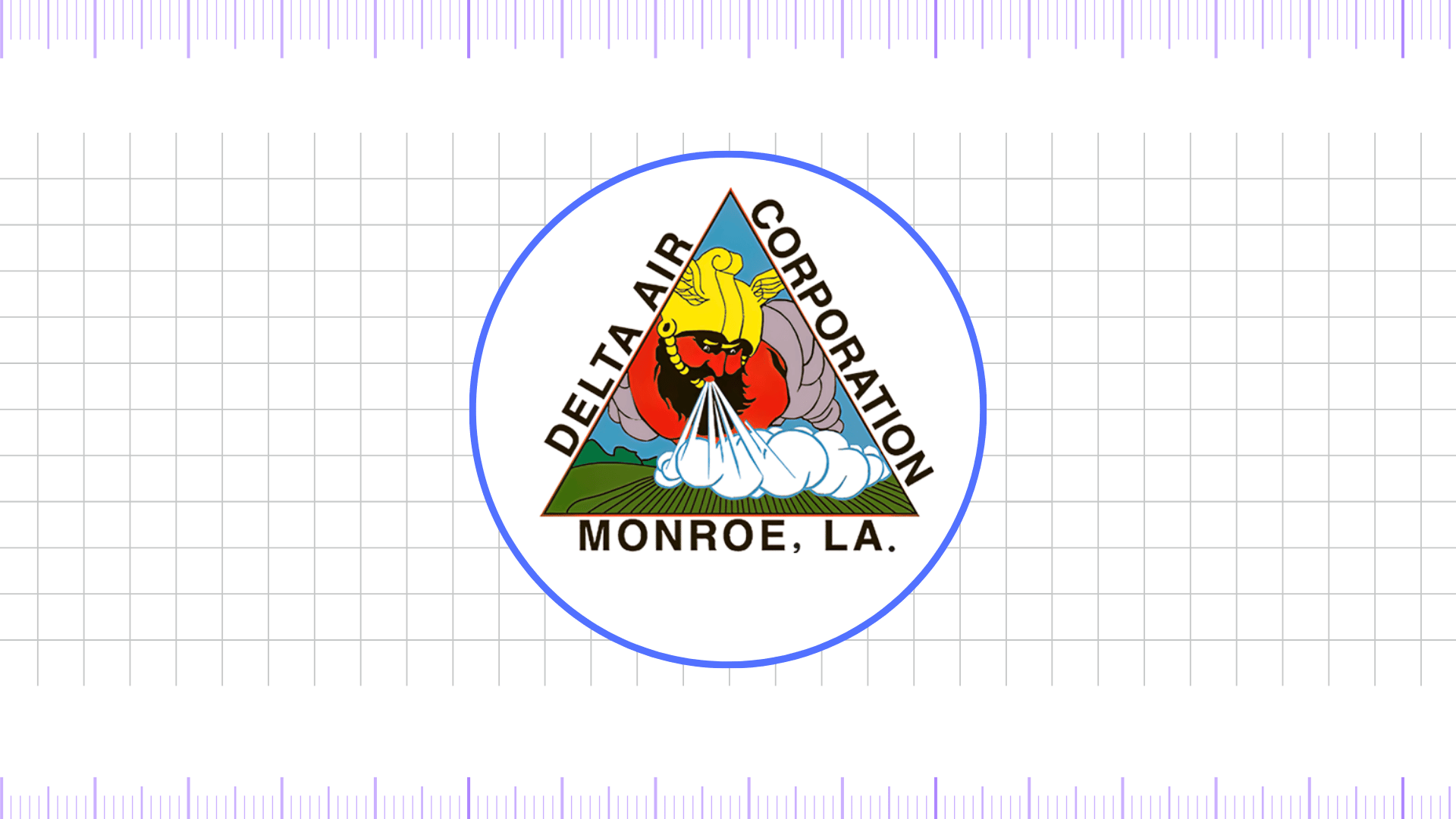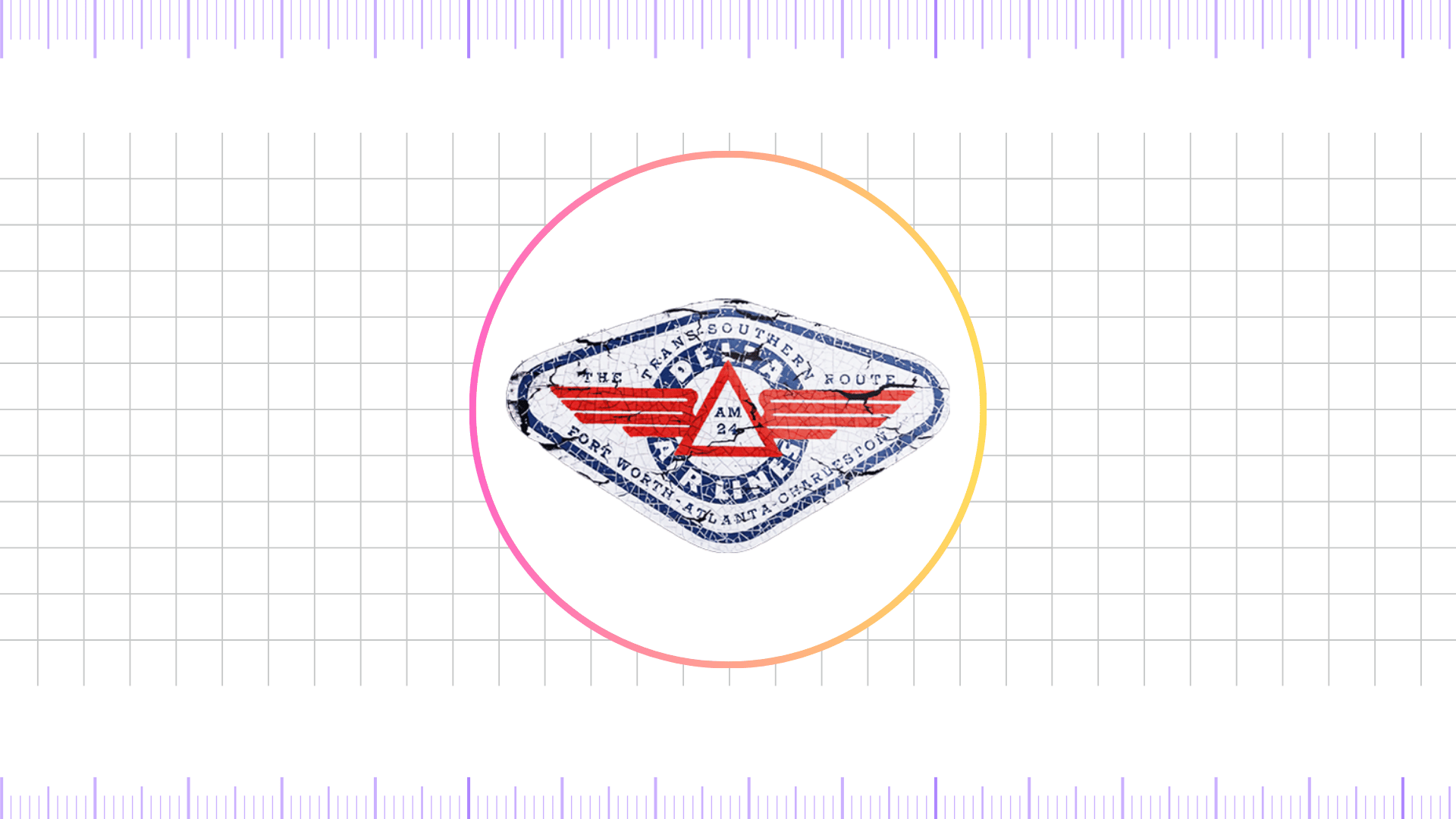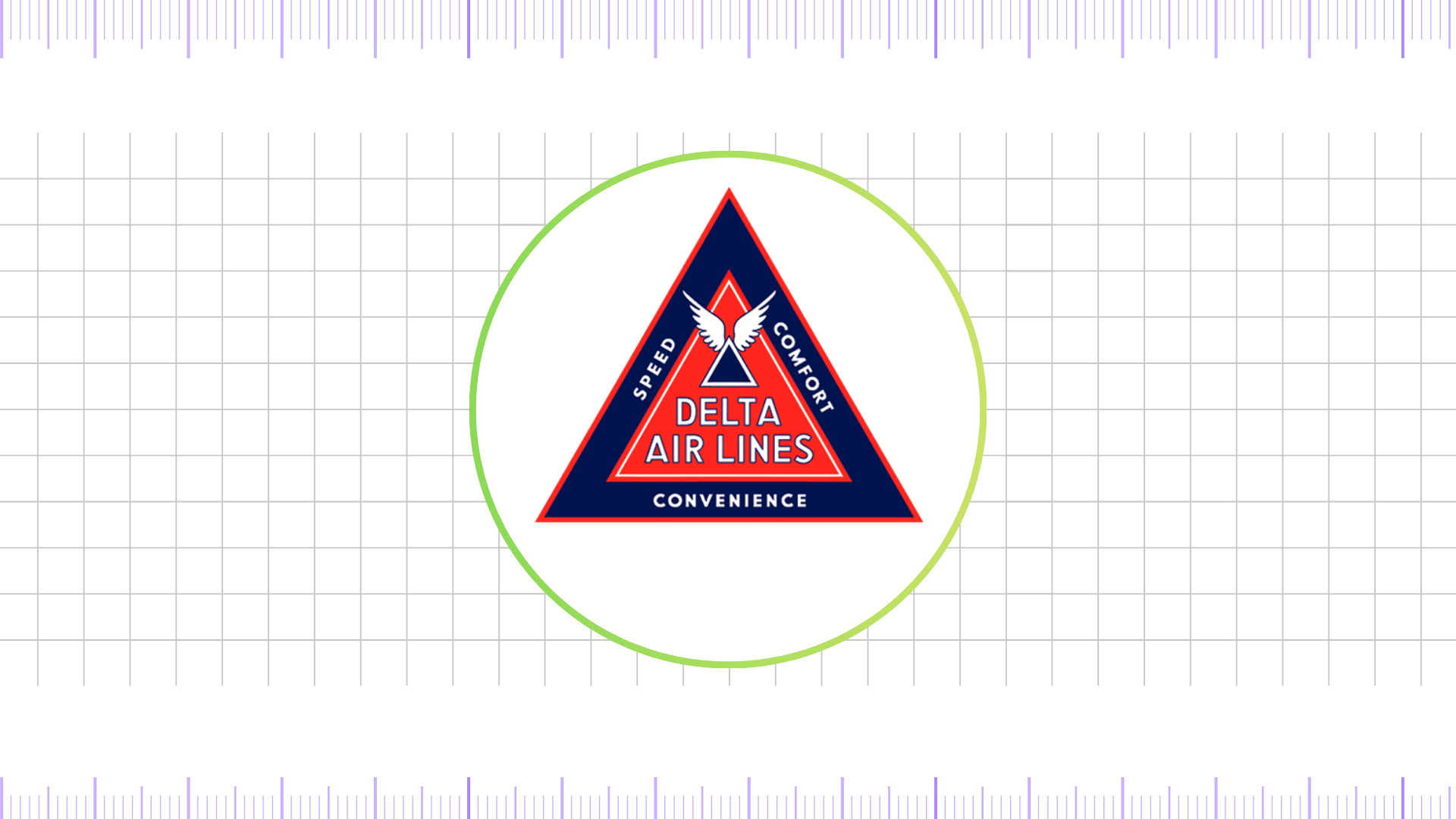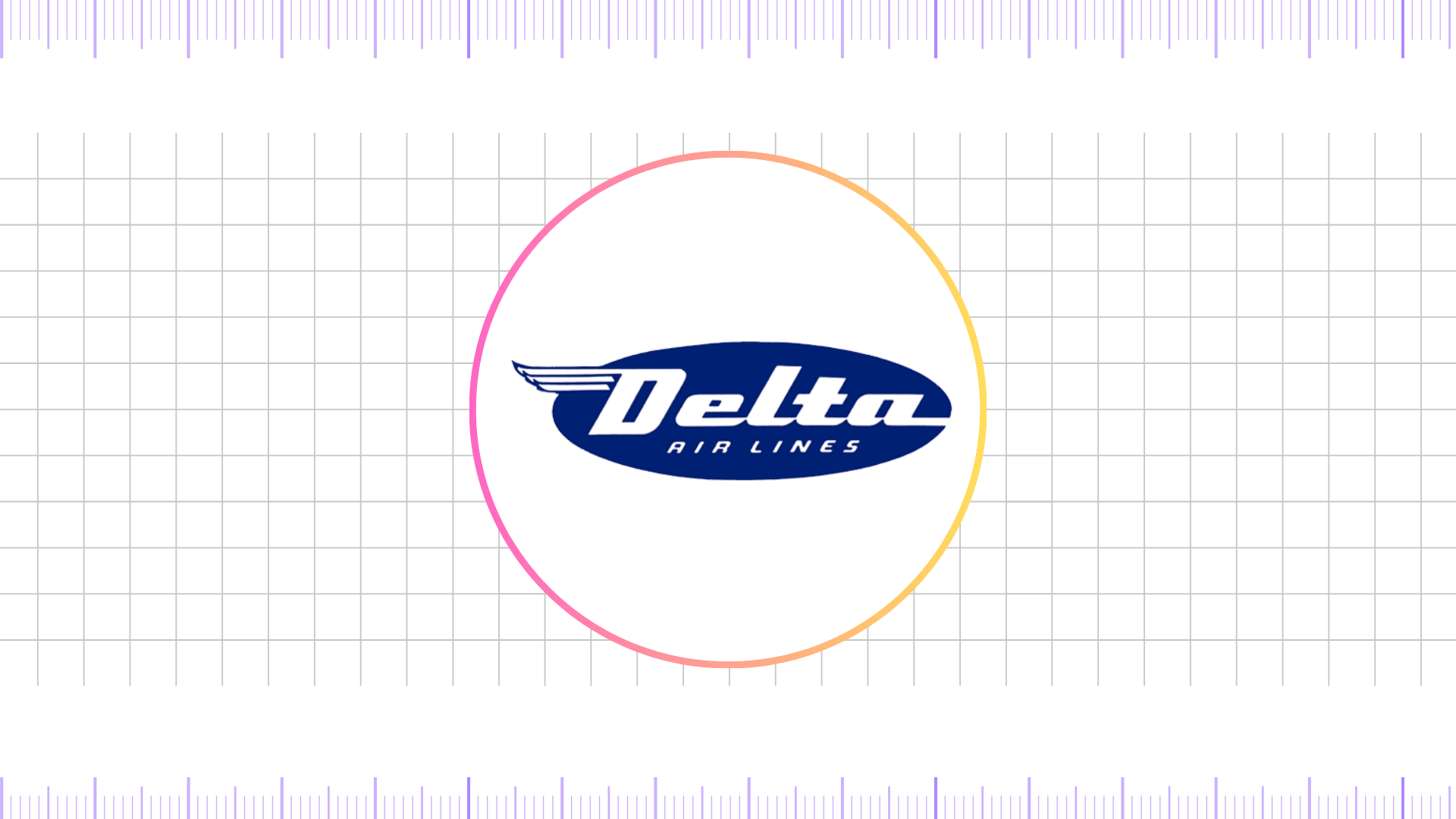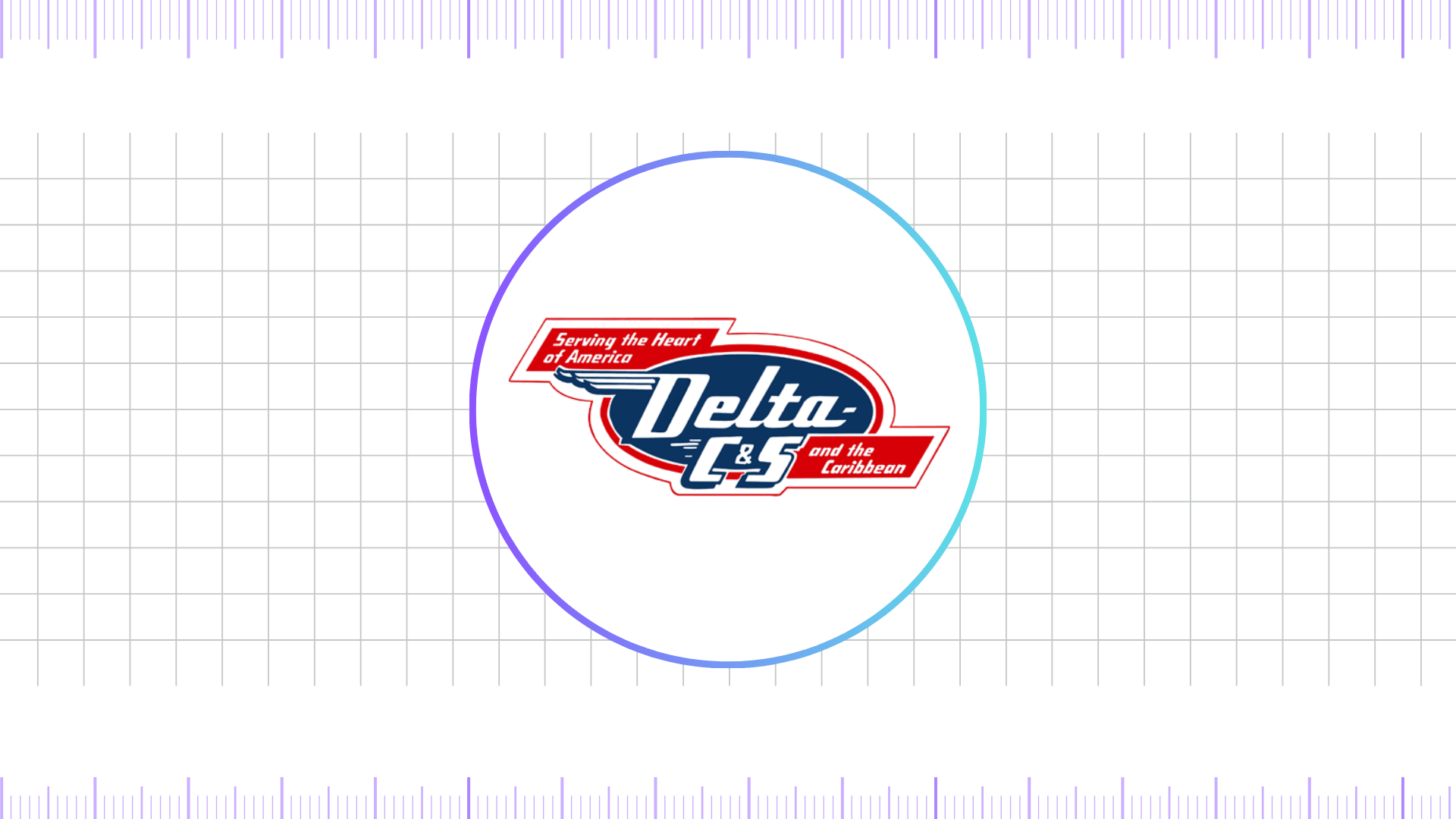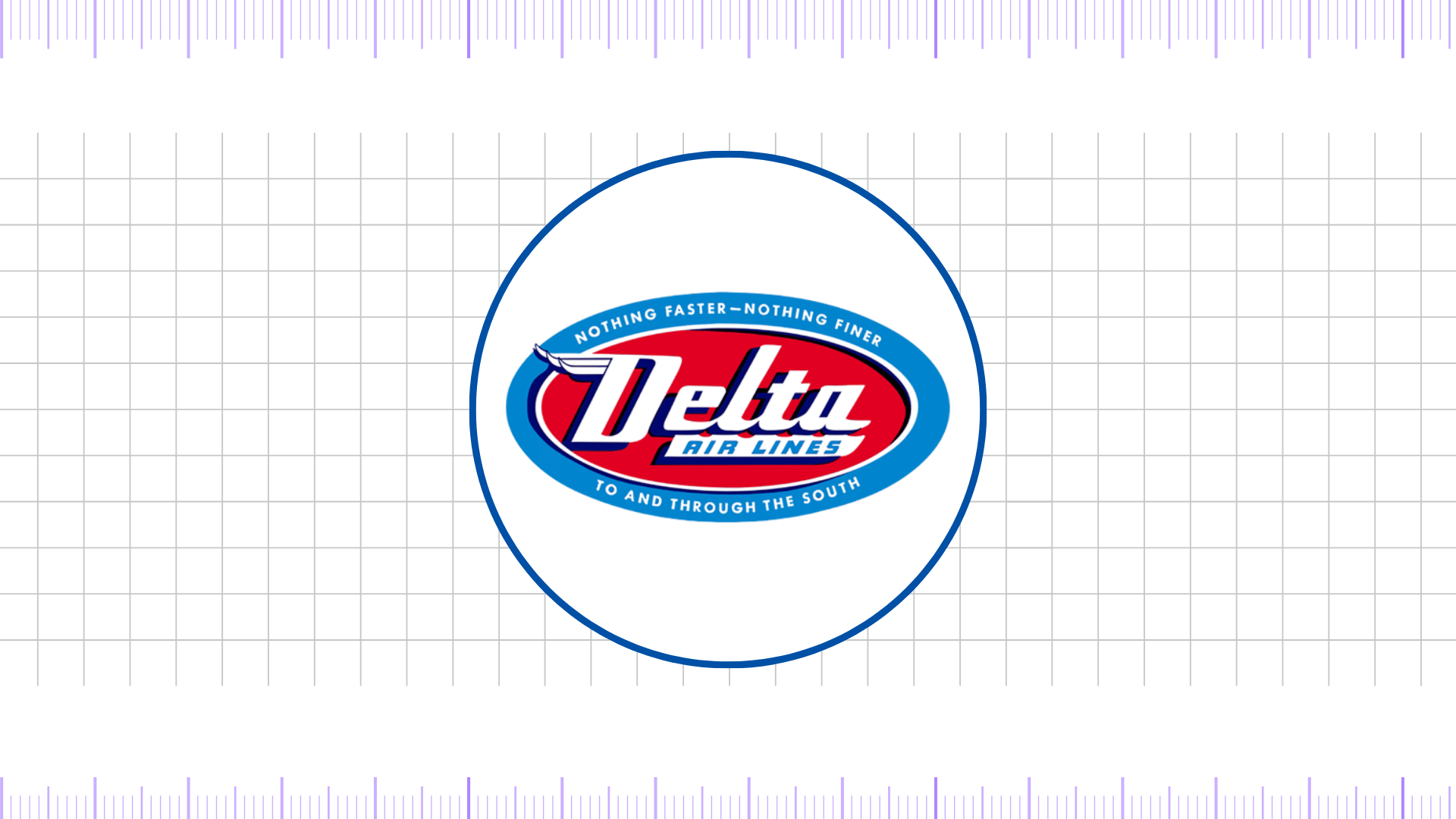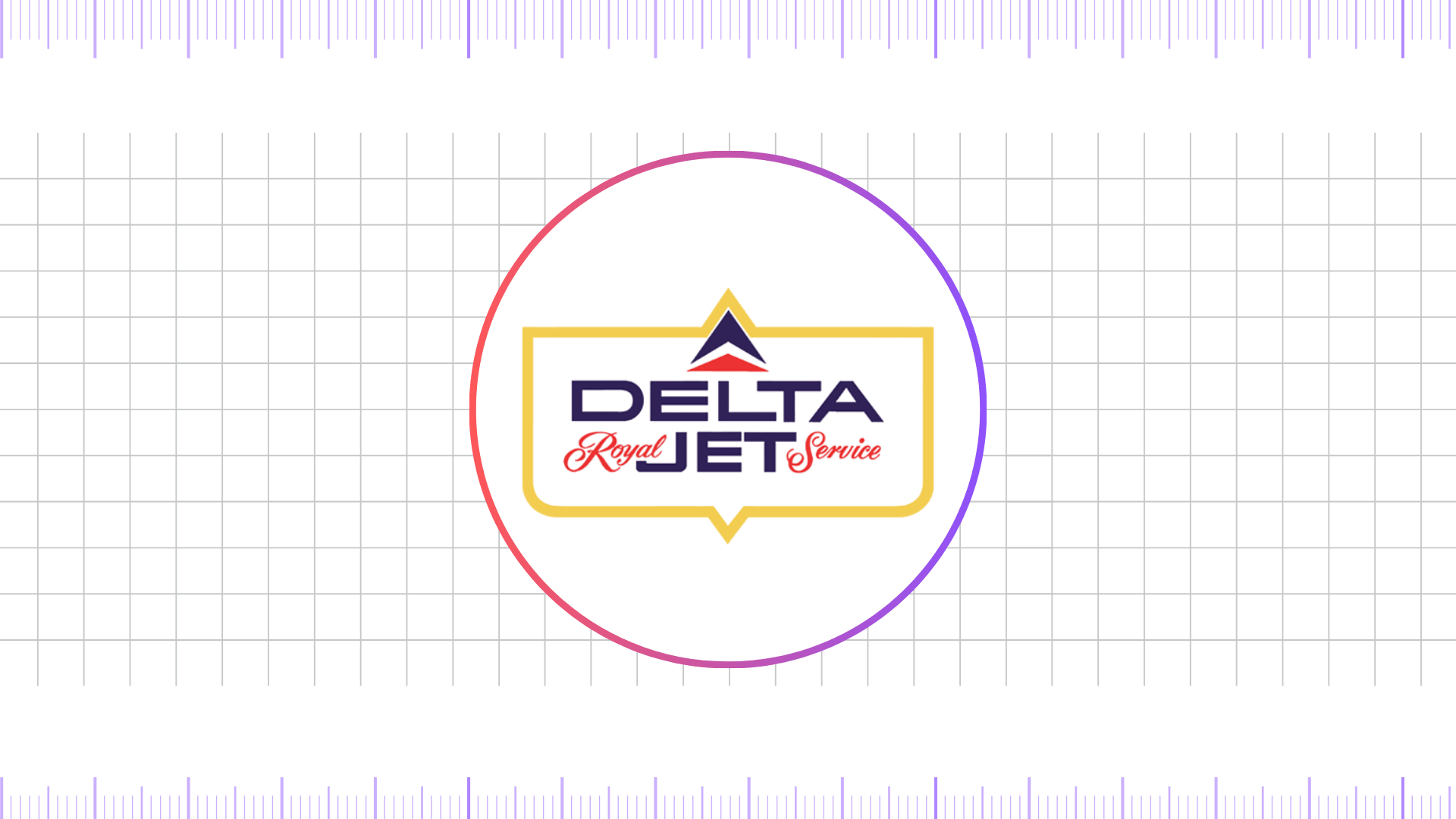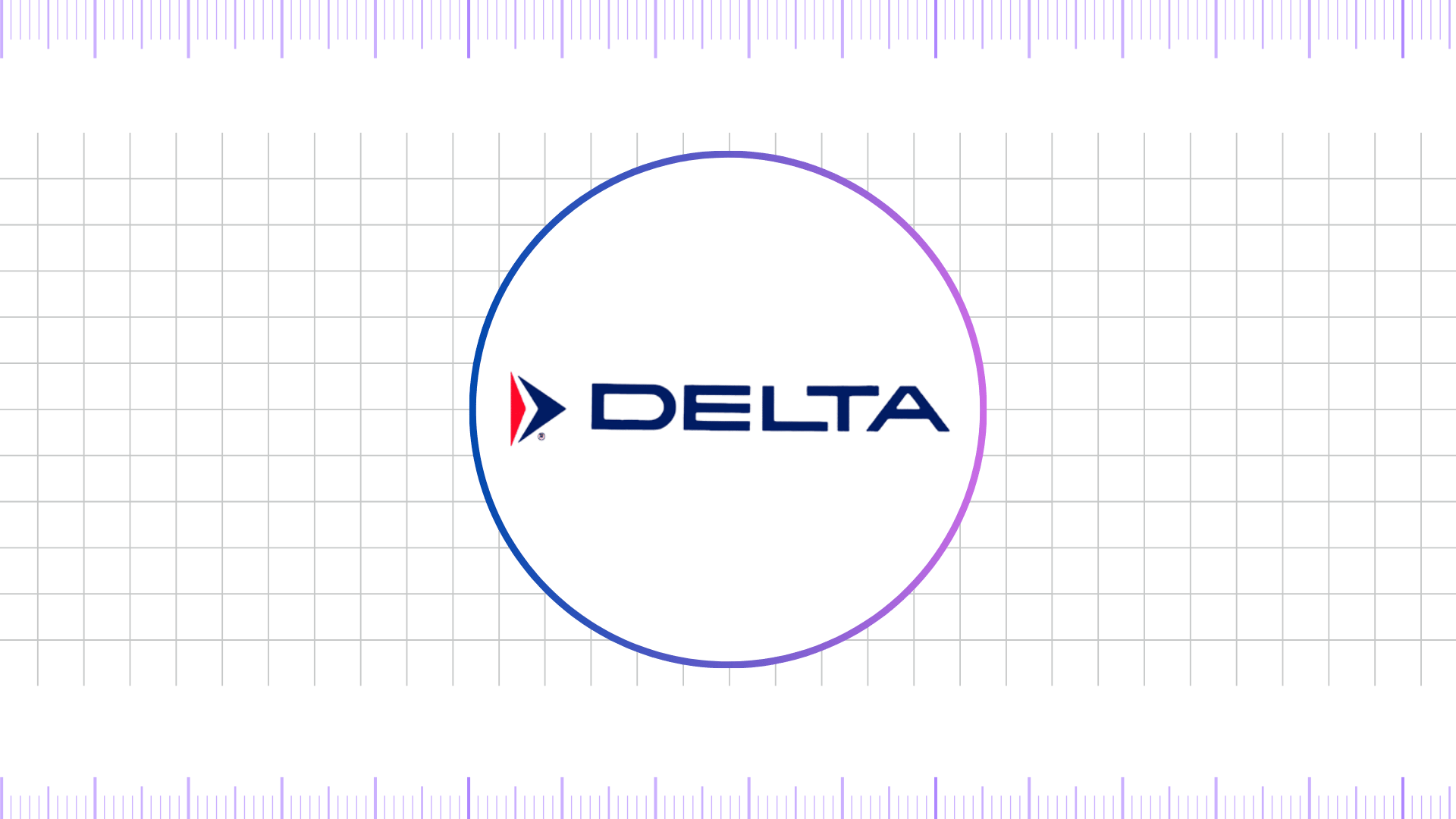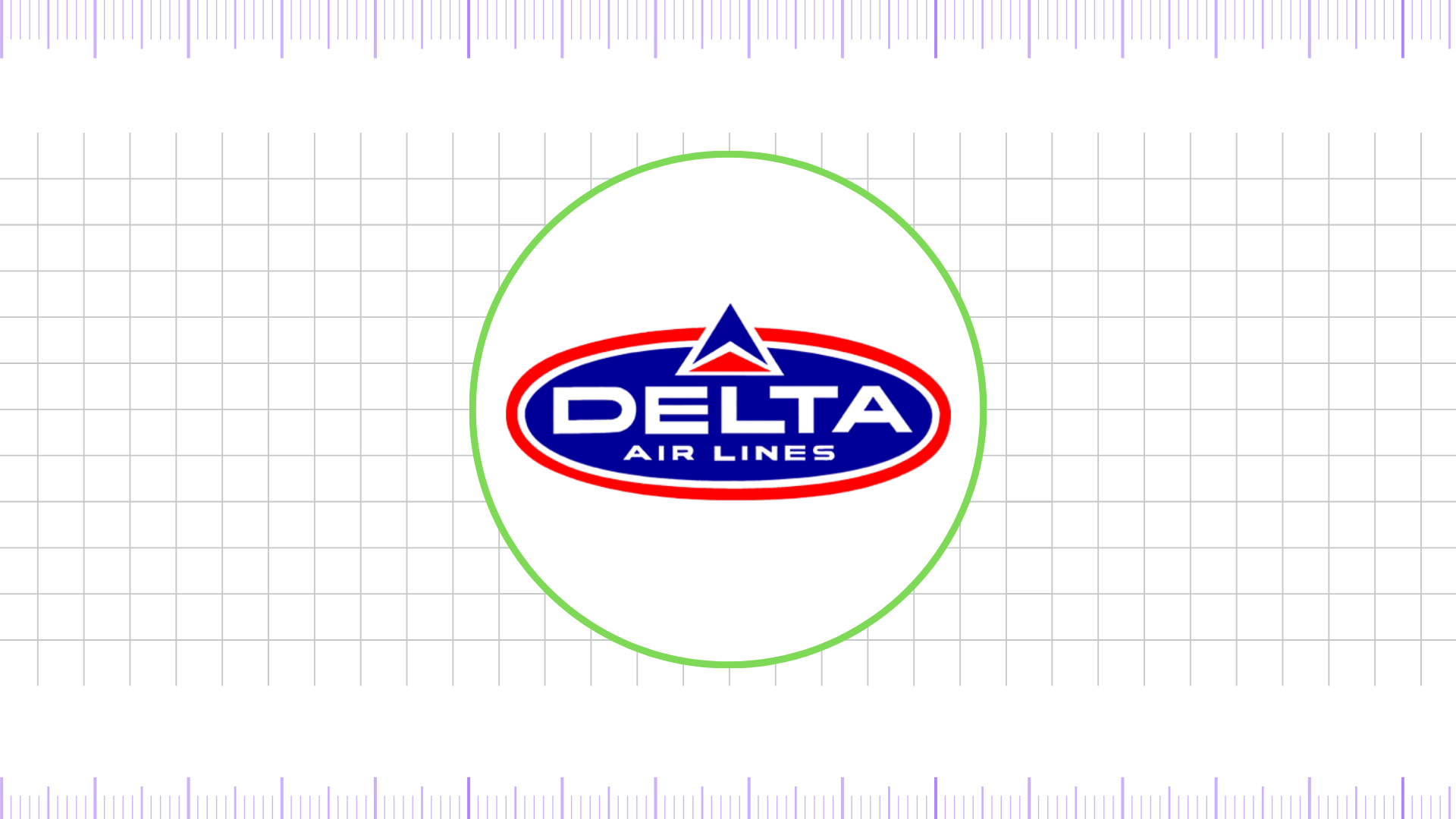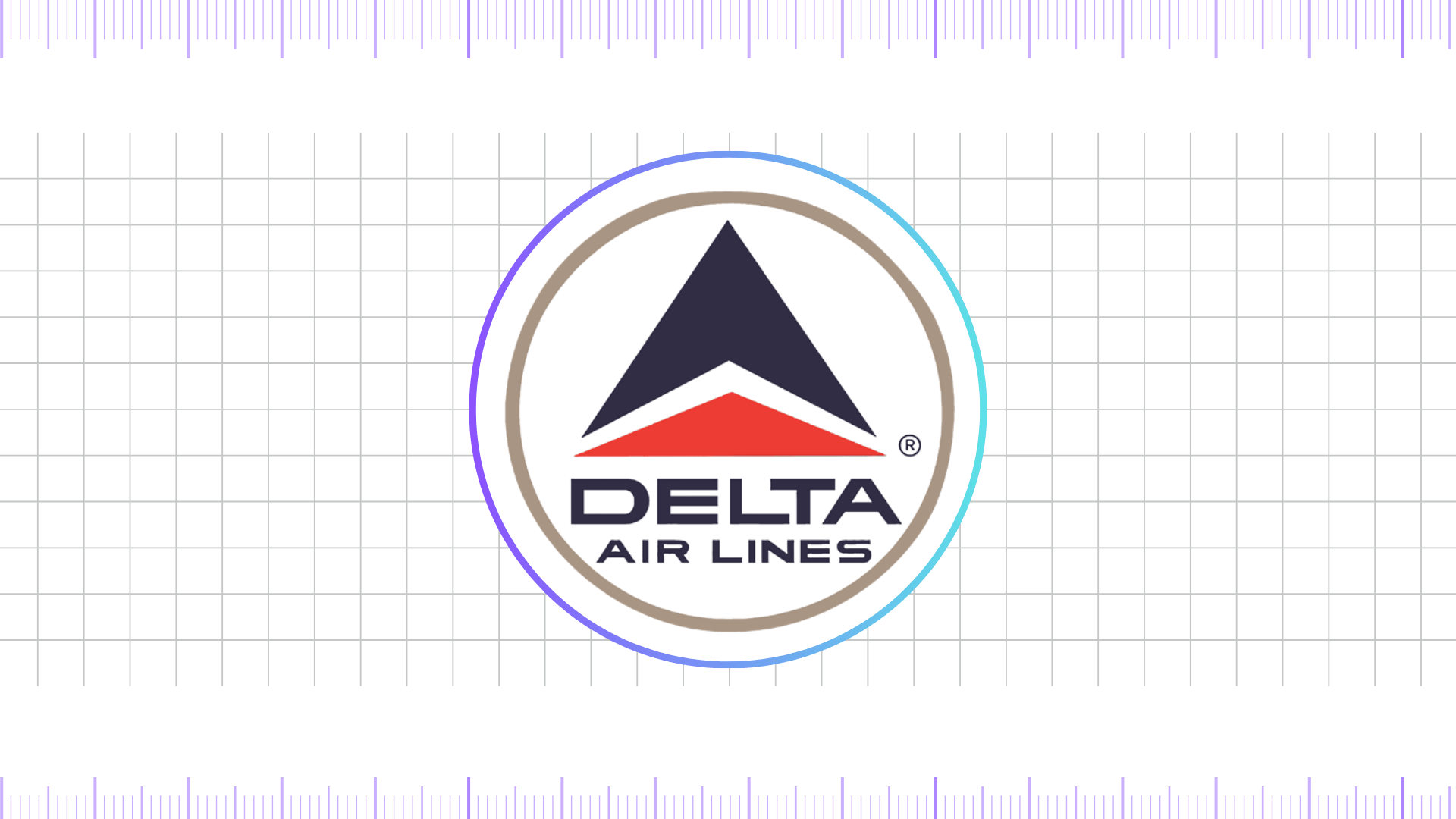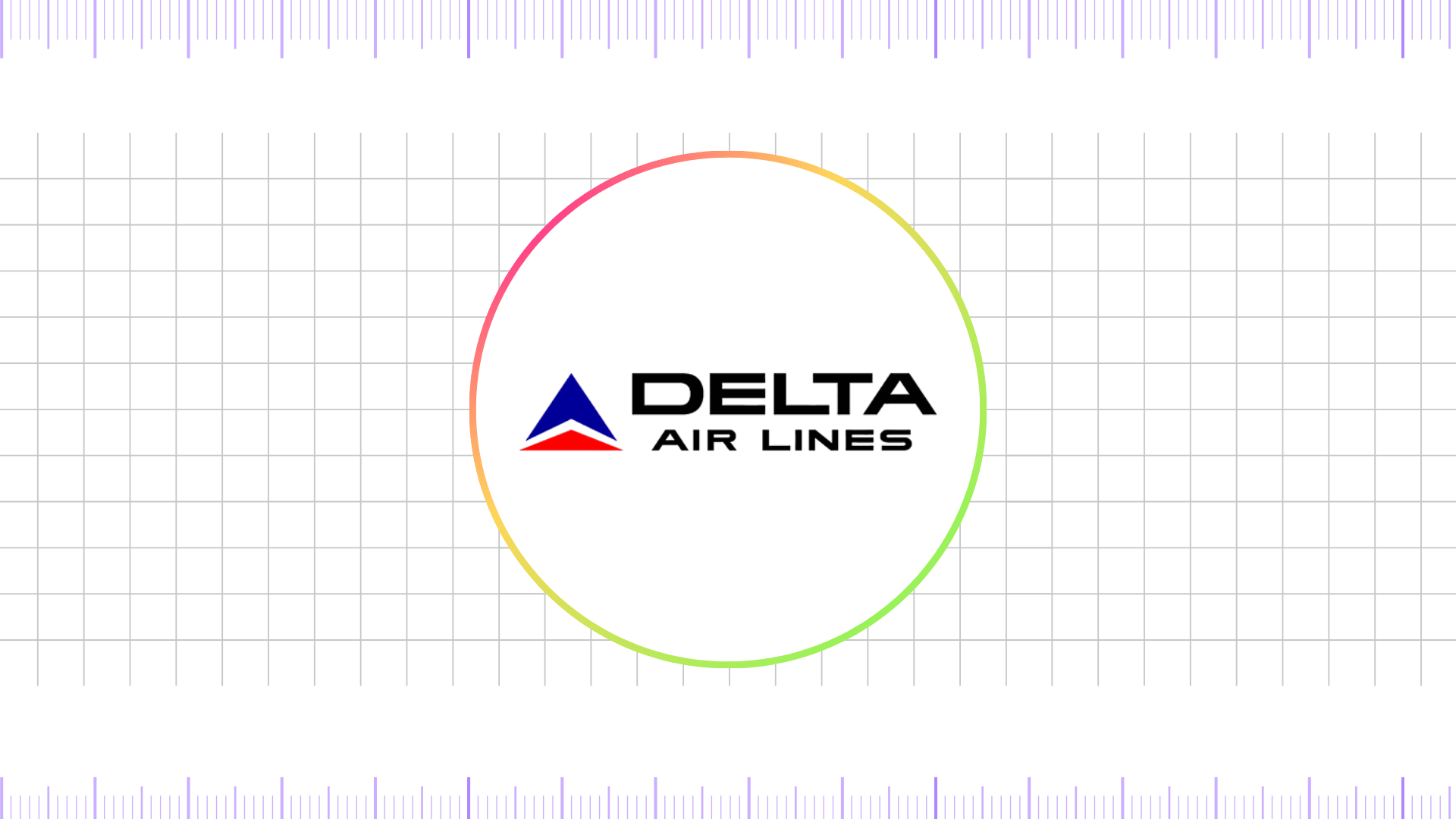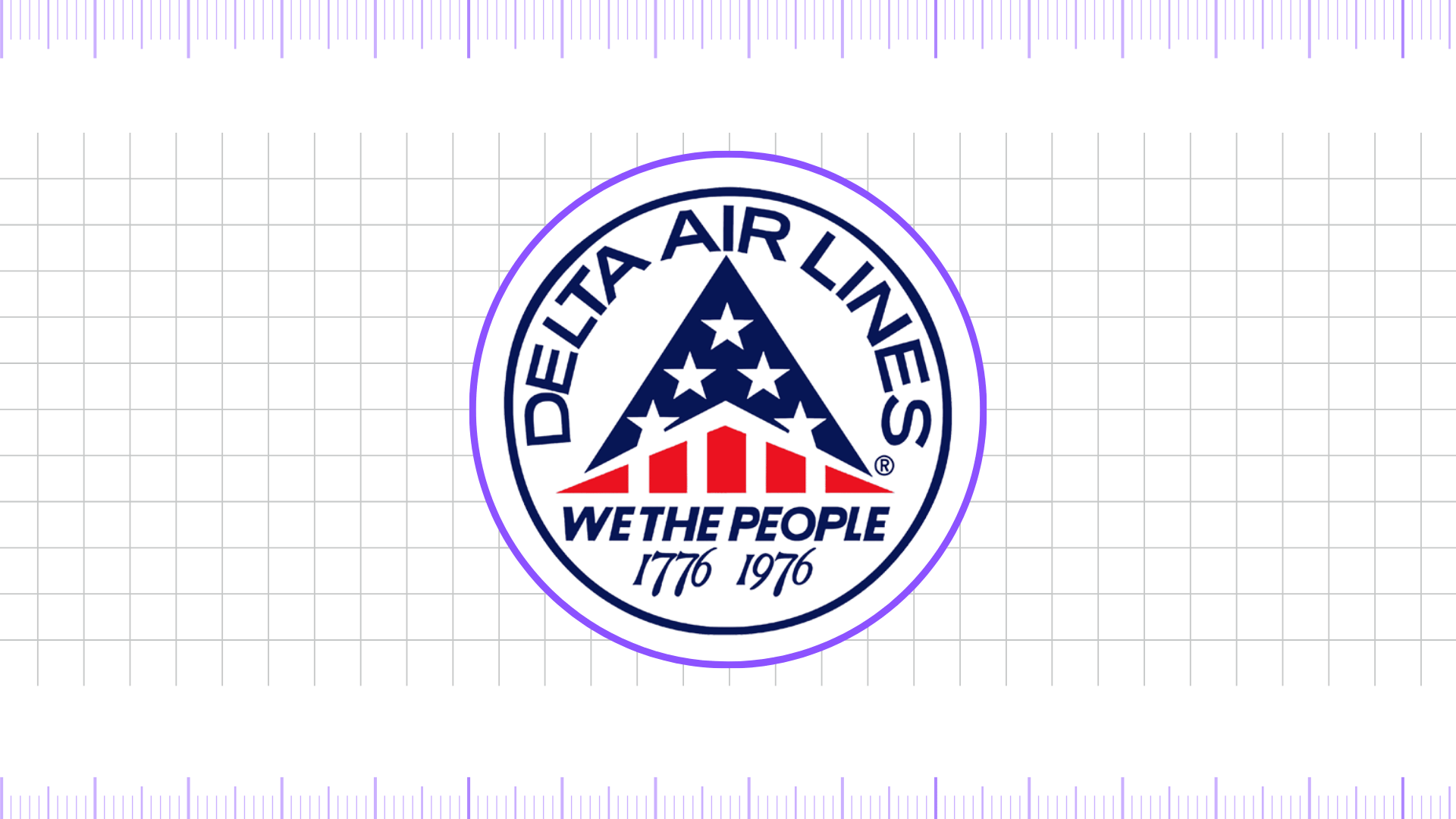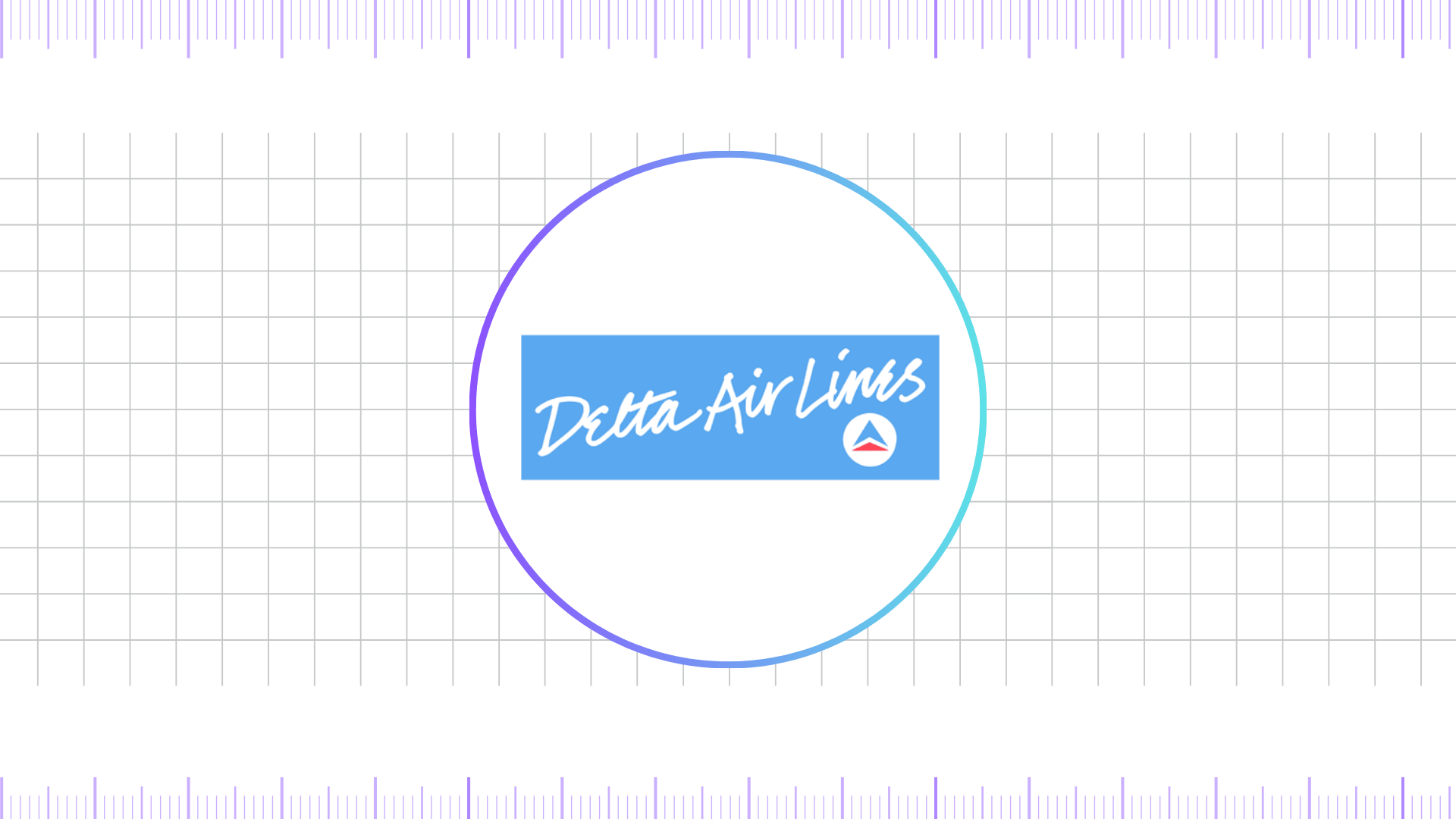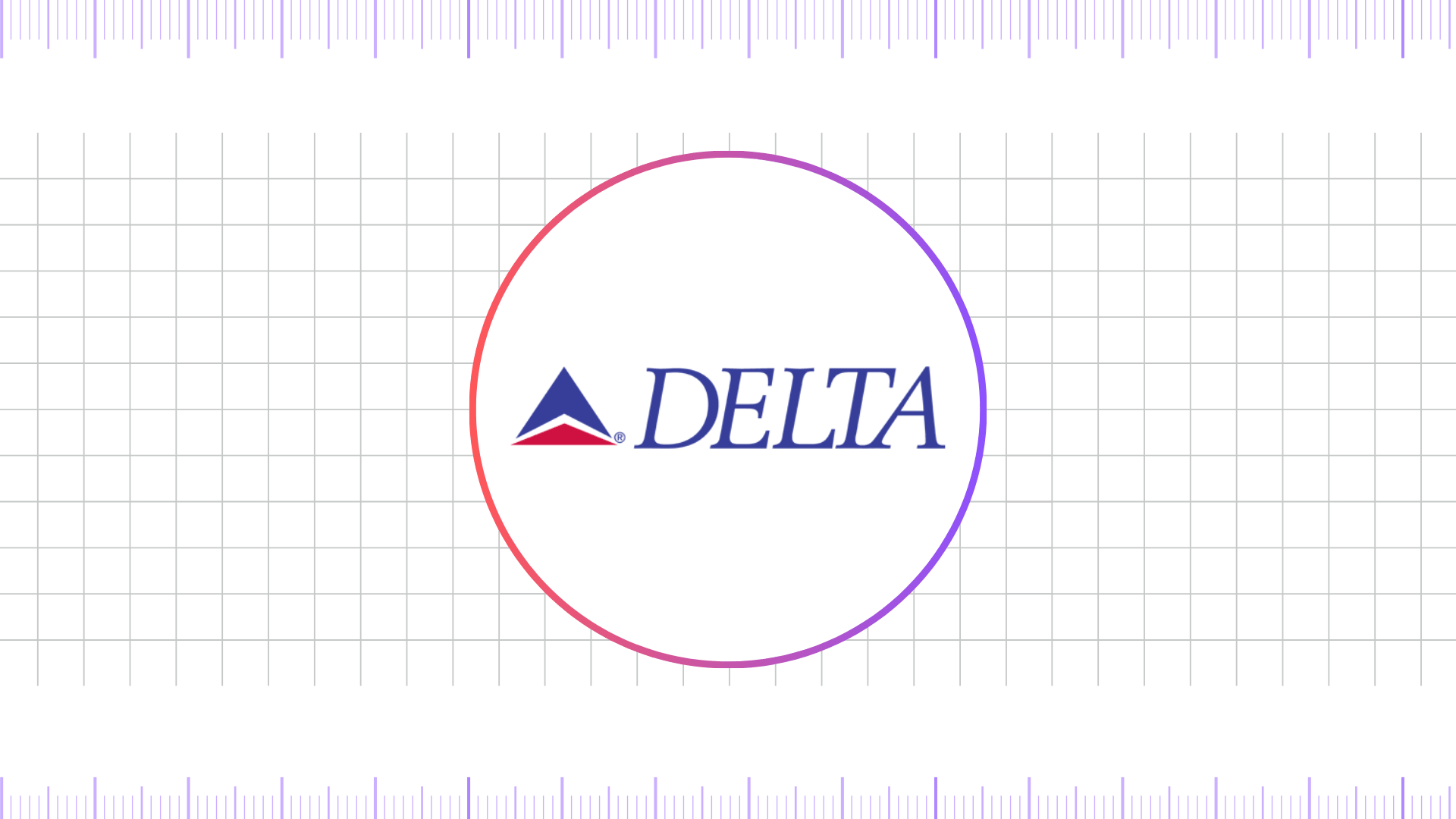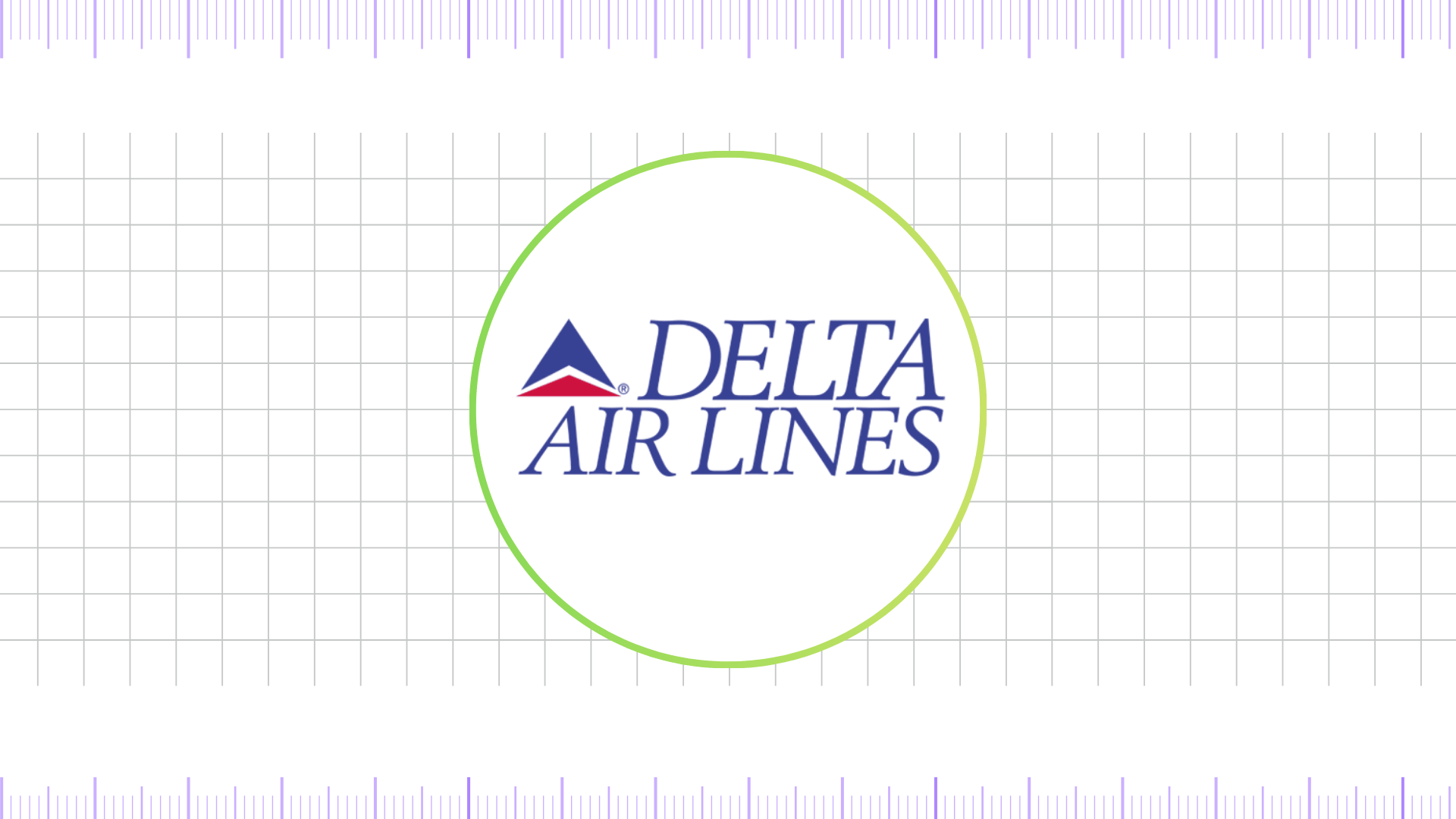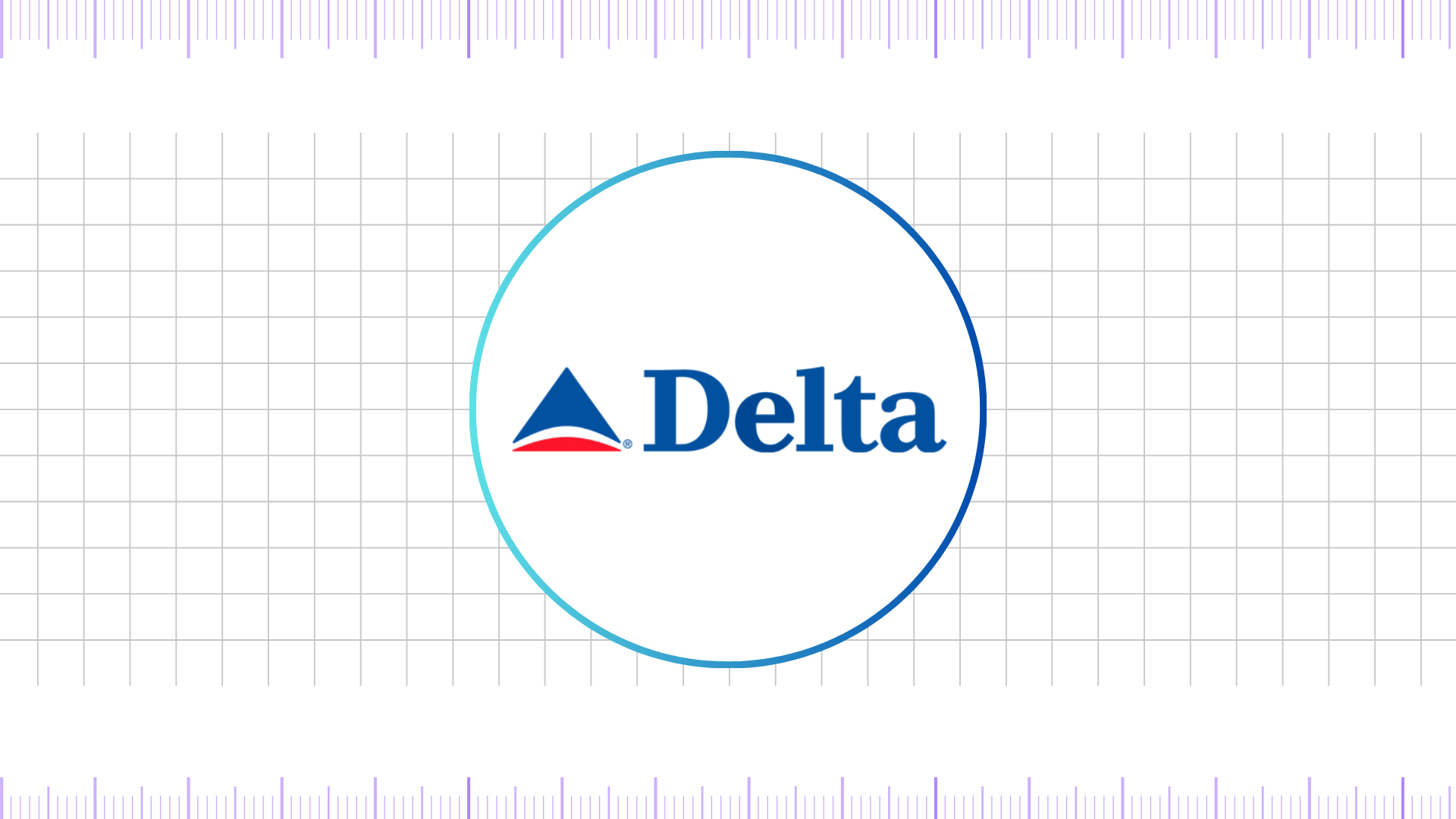Delta Air Lines is one of the world’s largest and most influential carriers, renowned for its extensive global network, innovative customer service, and a rich history that spans nearly a century. Founded in 1925 as Huff Daland Dusters, the company began as a pioneering crop-dusting operation in the American South before transitioning into passenger air service. Over the decades, Delta has grown from a regional airline into a global leader, operating thousands of flights daily to destinations across six continents.
Delta Air Lines Logo Evolution (1925 – Present)
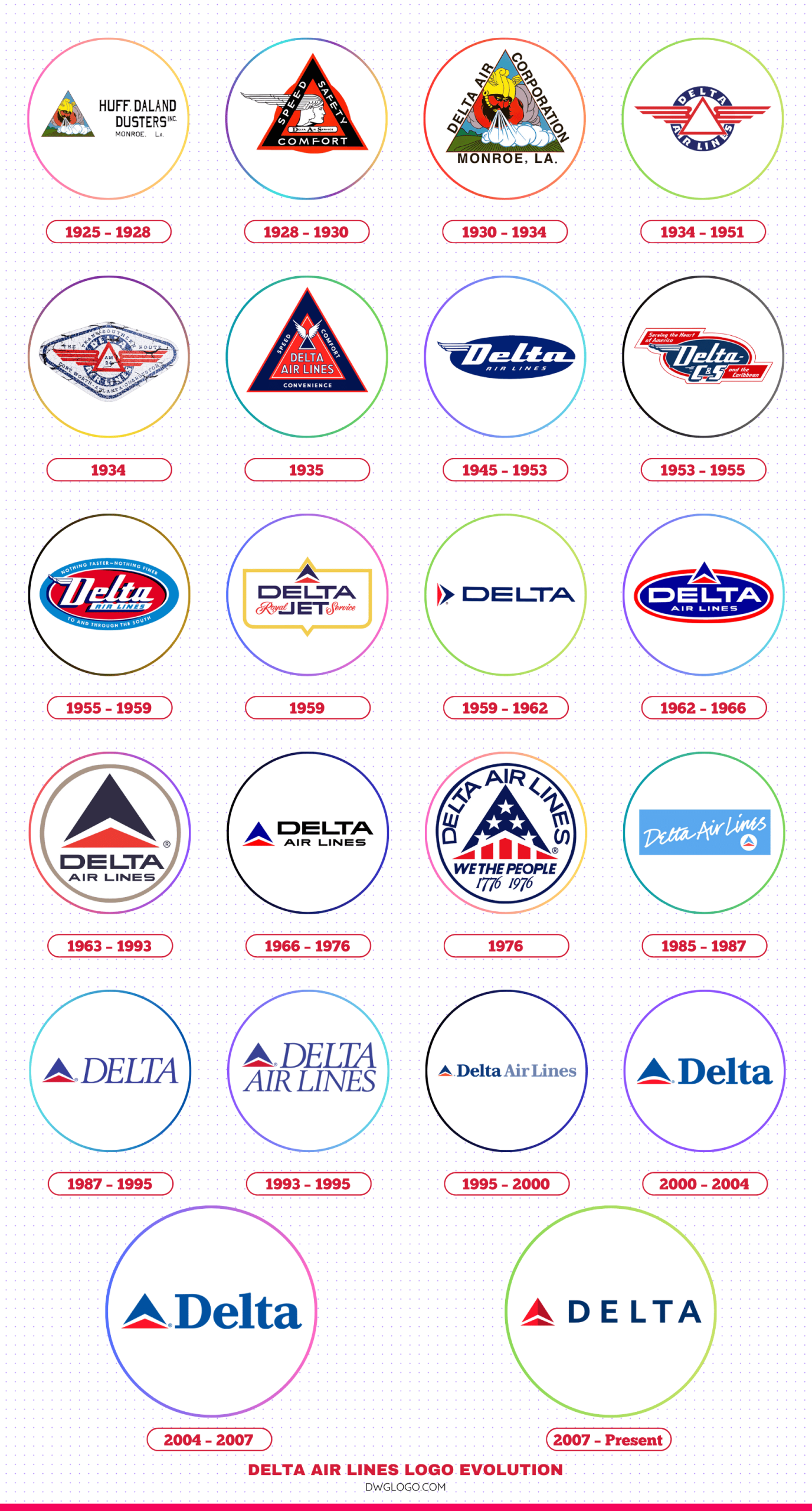
Headquartered in Atlanta, Georgia, Delta is celebrated not only for its operational excellence but also for its strong brand identity—symbolized by its distinctive triangular “widget” logo, which has become an enduring emblem of speed, progress, and reliability. The airline’s evolution reflects broader trends in aviation history, from the dawn of commercial flight to today’s era of high-tech, customer-focused air travel. Delta’s story is one of resilience, adaptability, and a commitment to connecting people and places around the world.
1925 – 1928
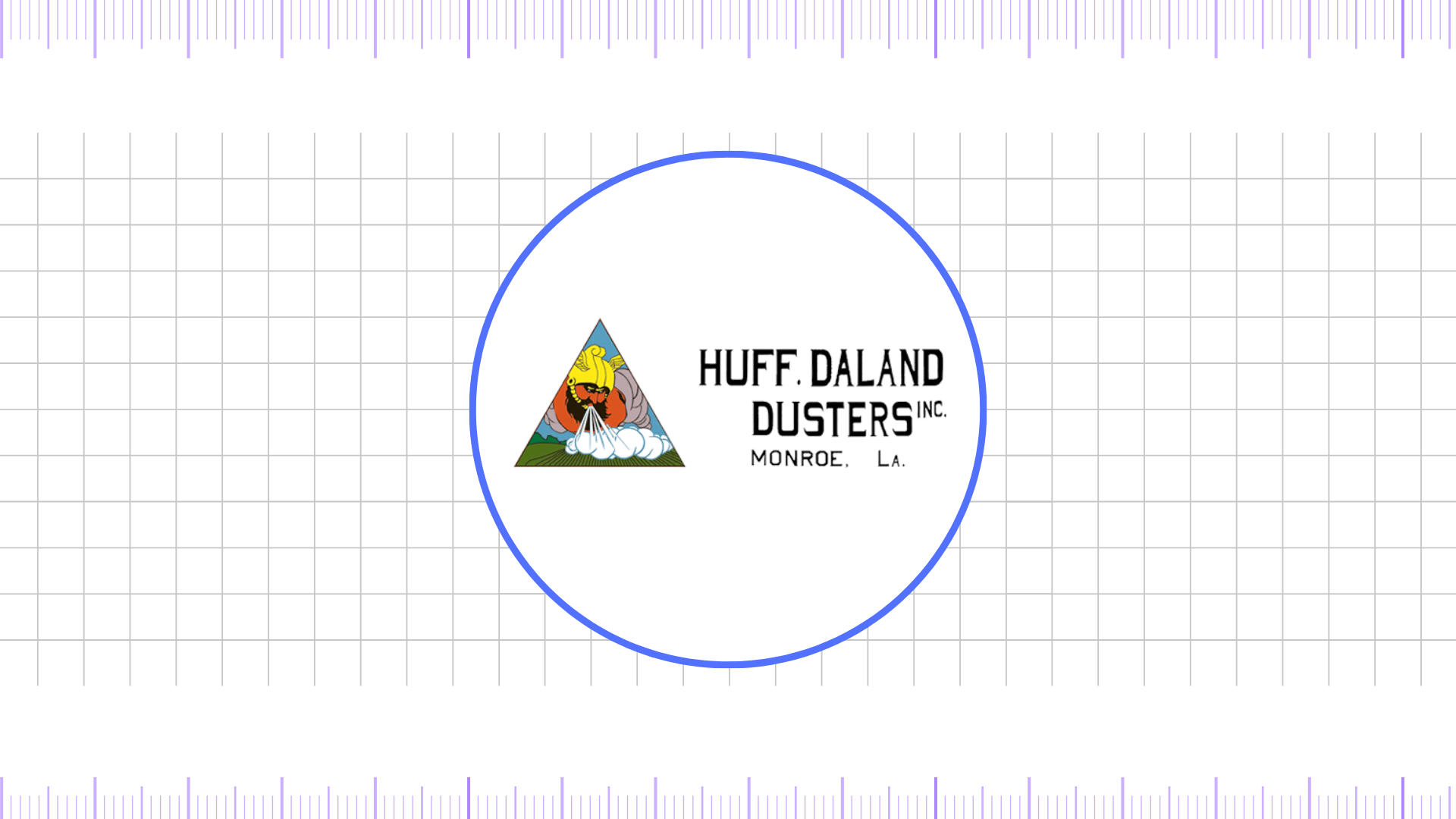
Delta’s story begins as Huff Daland Dusters, the world’s first aerial crop-dusting company, founded in 1925. Its logo featured the Norse god Thor, symbolizing strength and protection against the cotton boll weevil, placed within a triangular insignia—already hinting at the future delta motif.
1928 – 1930
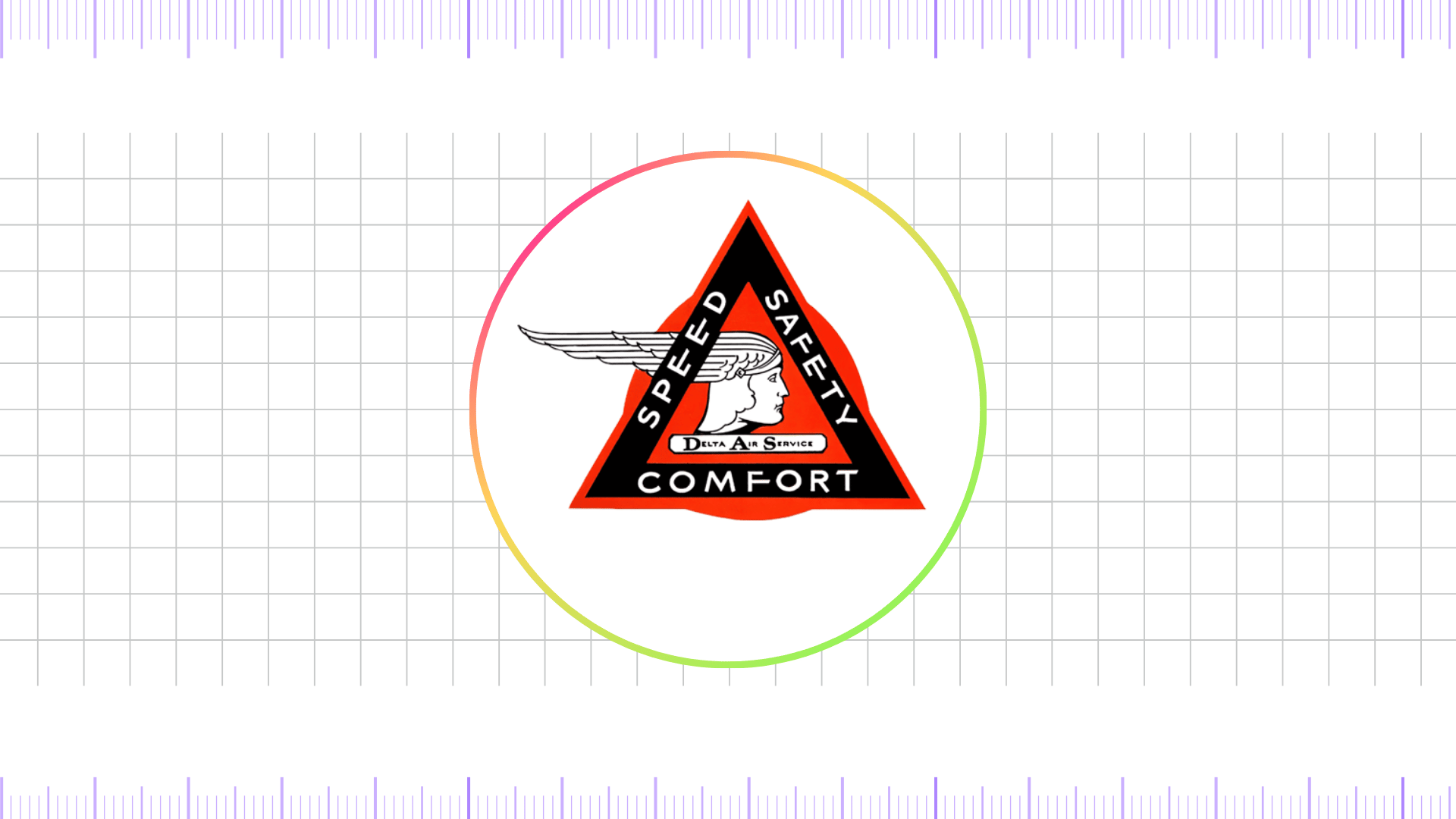
In 1928, the company was acquired by C.E. Woolman and became Delta Air Service, later Delta Air Lines. The logo retained the triangle and god imagery, now executed in red, black, and white, transitioning the brand from agricultural service to air carrier.
1930 – 1934
By 1930, with commercial passenger service underway, the logo simplified: a triangle, “Delta Air Corporation Monroe, LA” in uppercase sans-serif around the emblem—clean, confident, and geographically rooted.
1934
A fresh variant in 1934 placed the logo on a white background enclosed in a horizontally stretched blue rhomboid with rounded corners—adding professionalism and visual polish. This version was short-lived.
1935
By 1935, prototypes introduced a winged-triangle motif—early versions of the future widget design—used on luggage labels, with messaging touting “Speed, Comfort, and Convenience”.
1945 – 1953
In 1945, the logo changed to a sleek, slanted white logotype placed on a stretched blue elliptical banner. The “D” elongated into a three-feather stylized wing; “Air Lines” appeared above in sans-serif, giving a modern, elegant look. Post-1953, after acquiring Chicago & Southern (C&S), the badge was updated: outlined in red and white, with red rectangular accents and “Serving the Heart of America / And the Caribbean” tagline, and “C&S” replacing “Air Lines”.
1953 – 1955
Following its merger with Chicago & Southern Air Lines, the company rebranded as Delta C&S and introduced a refreshed logo design. The familiar blue oval was retained but the inscription “Delta” was updated to “C&S,” replacing the earlier “AIRLINES” text. The emblem featured a bold red-and-white border for greater visual impact, while two red parallelograms were added—one above bearing the phrase “Serving the Heart of America” and another below reading “and the Caribbean.” This redesign reflected the airline’s expanded network and commitment to its newly integrated service regions.
1955 – 1959
The 1955 redesign smoothed the form: an ellipsoidal badge with scarlet red fill framed in light blue, featuring the motto “Nothing Faster – Nothing Finer / To and Through the South.” The central winged “D” and “Air Lines” banner were retained.
1959
By 1959, Delta introduced the widget: a pair of interlocking triangles evocative of a jet wing and the Greek letter Δ. The blue triangular form appeared to the left of a sturdy uppercase “Delta” logotype in bold sans-serif—a modern symbol of speed and clarity.
1959 – 1962
A VIP version also emerged in 1959: a yellow-framed badge with prominent “Delta Jet” over the red-white-blue delta triangle, plus a cursive “Royal Service” tagline—an upscale treatment for premium customer experiences.
1962 – 1966
Delta refined and standardized the widget in 1962, overlaying it atop an ellipsoid badge outlined in white and red over blue, with bold white sans-serif lettering. This design blended the triangle emblem with previous banner-based styling.
1963 – 1993
From 1963, the logo featured a larger red-white-blue widget above a two-line logotype in dark blue, enclosed in a subtle gold circular frame—timeless and balanced.
1966 – 1976
The 1966 iteration simplified further: a colorful, friendly emblem set to the left of bold, black uppercase logotype with enlarged first line—minimalist and approachable.
1976
For America’s bicentennial, the 1976 anniversary logo featured a patriotic twist: the top triangle starred, the bottom striped like the U.S. flag, with “Delta Air Lines” arched above, “1776–1976” handwritten below, plus the tagline “With The People”.
1985 – 1987
In 1985, Delta tried a lighter sky-blue rectangular banner with white handwritten lettering and a small delta triangle in a white circle bottom-right—friendly but short-lived.
1987 – 1995
By 1987, the design matured: a dark blue and red delta triangle next to a slightly slanted uppercase logotype in an elegant serif—a clean and refined approach.
1993 – 1995
The 1993 tweak added “Air Lines” under the triangle emblem—though the layout felt somewhat unbalanced and was replaced soon after.
1995 – 2000
The 1995 version darkened the emblem, placed the logotype on one line—title case bold serif with “Delta” in dark blue, “Air” and “Lines” in lighter shades—creating a balanced, confident look.
2000 – 2004
In 2000, “Delta” alone returned (dropping “Air Lines”). The logo featured an all-white fuselage livery with a three-tone tail (“Colors in Motion” or “Wavy Gravy”), and a softened, curvy widget by Landor—a dynamic, fluid identity.
2004 – 2007
2004 saw subtle geometry: the red curve of the widget was redrawn precisely, while maintaining type and overall layout.
2007 – Present
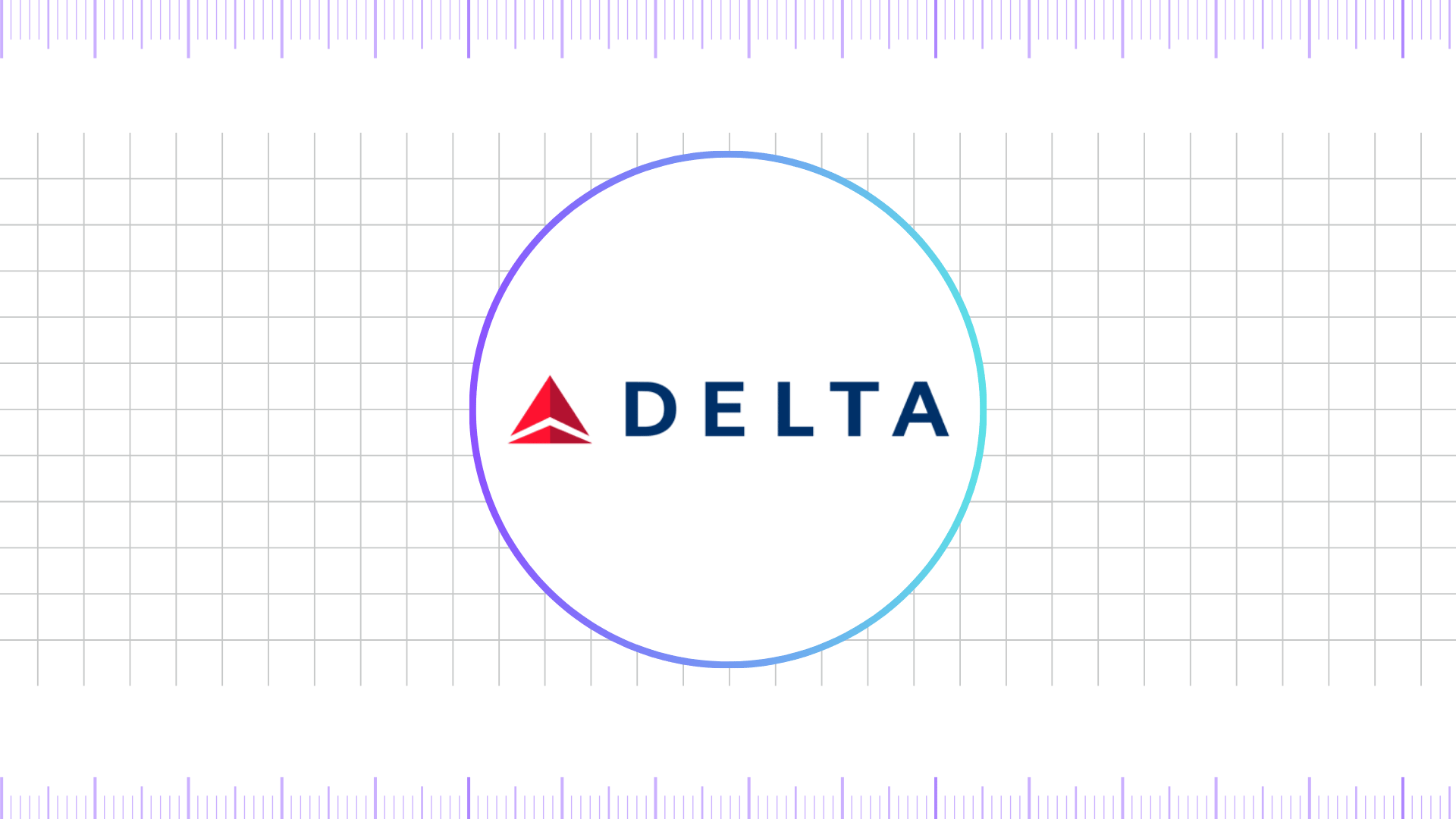
In 2007, post-bankruptcy, Delta unveiled “Onward & Upward” branding: off-white fuselage, curved dark-blue underside, dark-blue tail with a vertically split, three-dimensional red widget (dark and bright red halves). This design modernized the brand while referencing heritage. It reduced paint complexity from eight to four colors, streamlining operations and costs.
Font & Color Palette
- Typography: Over the years, Delta transitioned from serif to sleek sans-serif, ultimately settling on modern uppercase geometric sans-serif post-2000—clean, airy, and contemporary.
- Color: The signature palette has remained patriotic—red, blue, and white—aligning with Delta’s American roots, and symbolizing trust, reliability, and excellence
FAQ’s
Why is Delta’s logo called the “widget”?
It’s a stylized representation of the Greek letter Δ (delta) and resembles a swept jet wing—introduced in 1959 and long associated with the brand.
What does the triangle symbolize?
It evokes both the Greek letter Δ (“Delta”) and the sleek form of a jet in flight, reinforcing notions of speed and precision.
Why did Delta simplify branding in 2007?
After emerging from bankruptcy, the updated branding reduced painting complexity, saving time and costs—four colors instead of eight—and reflected a modernized image.
Final thoughts,
Delta Air Lines’ logo evolution narrates the story of an airline transitioning from agricultural roots to global aviation leadership. Through nearly a century, the triangle has remained constant—reinvented continually to evoke speed, reliability, national identity, and modernization. From the mythological emblem of Thor in 1925 to today’s sleek, three-dimensional widget, Delta’s visual identity illustrates how thoughtful design bridges past and future.
Reference: [1]
